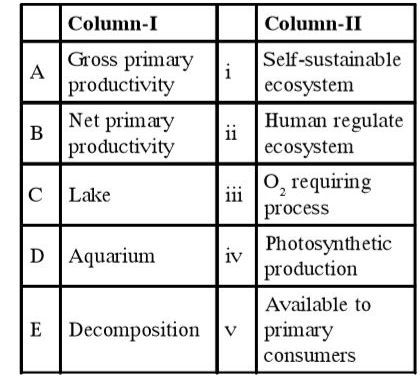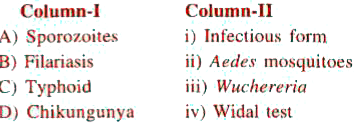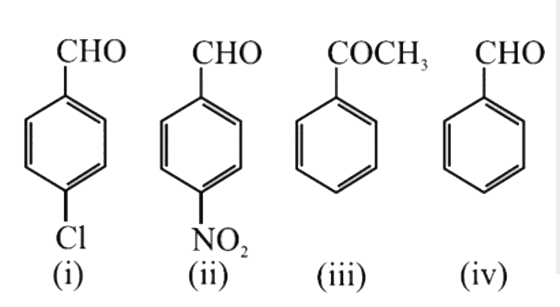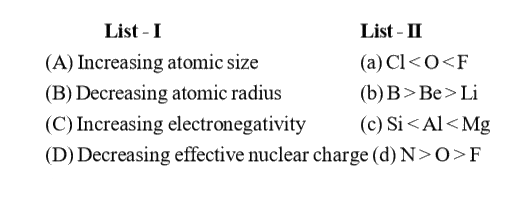Arrange these compounds in decreasing order of reactivity for the nucleophilic addition reaction:
(l) Acid chloride
(ll) Aldehyde
(lll) Ketone
(lV) Ester
Select the correct answer from the codes given below:
1>2>3>4
4>3>2>1
3>2>1>4
1>4>2>3
The correct Answer is:D
To arrange the compounds in decreasing order of reactivity for nucleophilic addition reactions, we need to analyze the electron-withdrawing or donating effects of the substituents attached to the carbonyl carbon of each compound. The more electron-deficient the carbonyl carbon is, the more reactive it will be towards nucleophiles.
1. Identify the Compounds: The compounds we need to analyze are:
- (I) Acid Chloride
- (II) Aldehyde
- (III) Ketone
- (IV) Ester
2. Understand the Structure:
- Acid Chloride: Contains a carbonyl group (C=O) bonded to a chlorine atom. Chlorine is highly electronegative, which pulls electron density away from the carbonyl carbon, making it highly electrophilic.
- Aldehyde: Contains a carbonyl group bonded to at least one hydrogen atom. The hydrogen does not donate electron density, so the carbonyl carbon remains relatively electrophilic.
- Ketone: Contains a carbonyl group bonded to two carbon atoms. The alkyl groups can donate some electron density through the inductive effect, making the carbonyl carbon less electrophilic than in aldehydes.
- Ester: Contains a carbonyl group bonded to an alkoxy group (R-O). The alkoxy group can donate electron density through resonance, making the carbonyl carbon the least electrophilic among the four.
3. Rank the Reactivity:
- Most Reactive: Acid Chloride (I) - due to the strong electron-withdrawing effect of chlorine.
- Next Reactive: Aldehyde (II) - less electron donation compared to ketones and esters.
- Less Reactive: Ketone (III) - has two alkyl groups that donate electron density, reducing electrophilicity.
- Least Reactive: Ester (IV) - the alkoxy group donates electron density through resonance, making it the least electrophilic.
4. Final Order of Reactivity:
- (I) Acid Chloride > (II) Aldehyde > (III) Ketone > (IV) Ester
Conclusion:
The correct order of reactivity for nucleophilic addition reactions is:
Acid Chloride > Aldehyde > Ketone > Ester
- (I) Acid Chloride
- (II) Aldehyde
- (III) Ketone
- (IV) Ester
- Acid Chloride: Contains a carbonyl group (C=O) bonded to a chlorine atom. Chlorine is highly electronegative, which pulls electron density away from the carbonyl carbon, making it highly electrophilic.
- Aldehyde: Contains a carbonyl group bonded to at least one hydrogen atom. The hydrogen does not donate electron density, so the carbonyl carbon remains relatively electrophilic.
- Ketone: Contains a carbonyl group bonded to two carbon atoms. The alkyl groups can donate some electron density through the inductive effect, making the carbonyl carbon less electrophilic than in aldehydes.
- Ester: Contains a carbonyl group bonded to an alkoxy group (R-O). The alkoxy group can donate electron density through resonance, making the carbonyl carbon the least electrophilic among the four.
- Most Reactive: Acid Chloride (I) - due to the strong electron-withdrawing effect of chlorine.
- Next Reactive: Aldehyde (II) - less electron donation compared to ketones and esters.
- Less Reactive: Ketone (III) - has two alkyl groups that donate electron density, reducing electrophilicity.
- Least Reactive: Ester (IV) - the alkoxy group donates electron density through resonance, making it the least electrophilic.
- (I) Acid Chloride > (II) Aldehyde > (III) Ketone > (IV) Ester
The correct order of reactivity for nucleophilic addition reactions is:
Acid Chloride > Aldehyde > Ketone > Ester
Similar Questions
Knowledge Check
Arrange these compounds in decreasing order of reactivity for the nucleophilic addition reaction.
(I) Acid chloride (II) Aldehyde (III) Ketone (IV) EsterAI>II>III>IVBIV>III>II>ICIII>II>I>IVDI>IV>II>IIIArrange the following carbonyl compounds in decreasing order of their reactivity in nucleophilic addition reaction.
 Aii>iii>i>ivBii>i>iv>iiiCiii>ii>i>ivDiii>i>iv>ii
Aii>iii>i>ivBii>i>iv>iiiCiii>ii>i>ivDiii>i>iv>iiArrange the following compounds in increasing order of their reactivity in nucleophilic addition reactions.
Ethanal, Propanal, Propanone, ButanoneAButanone lt Propanone lt Propanal lt EthanalBPropanone lt Butanone lt Ethanal gt PropanalCPropanal lt Ethanal lt Propanone lt ButanoneDEthanal lt Propanal lt Propanone lt Butanone
Match Column-I with Column-II and select the correct answer from the codes given below. :-

View SolutionMatch list I with List II and then select the correct answer from the codes given below the lists

View SolutionMatch Column-I with Column-II, and select the correct answer from codes given below

View SolutionMatch Column-I with Column-II, and select the correct answer from codes given below

View Solutionrrange the following compounds in decreasing order of reactivity towards nucleophilic addition reaction: I) C 6 H 5 COCH 3 II) CH 3 −COCH 3 III) CH 3 −CHO
View Solution


